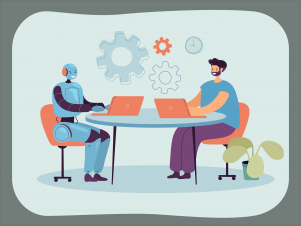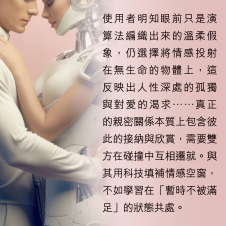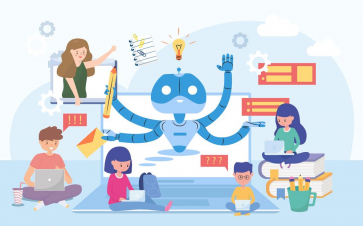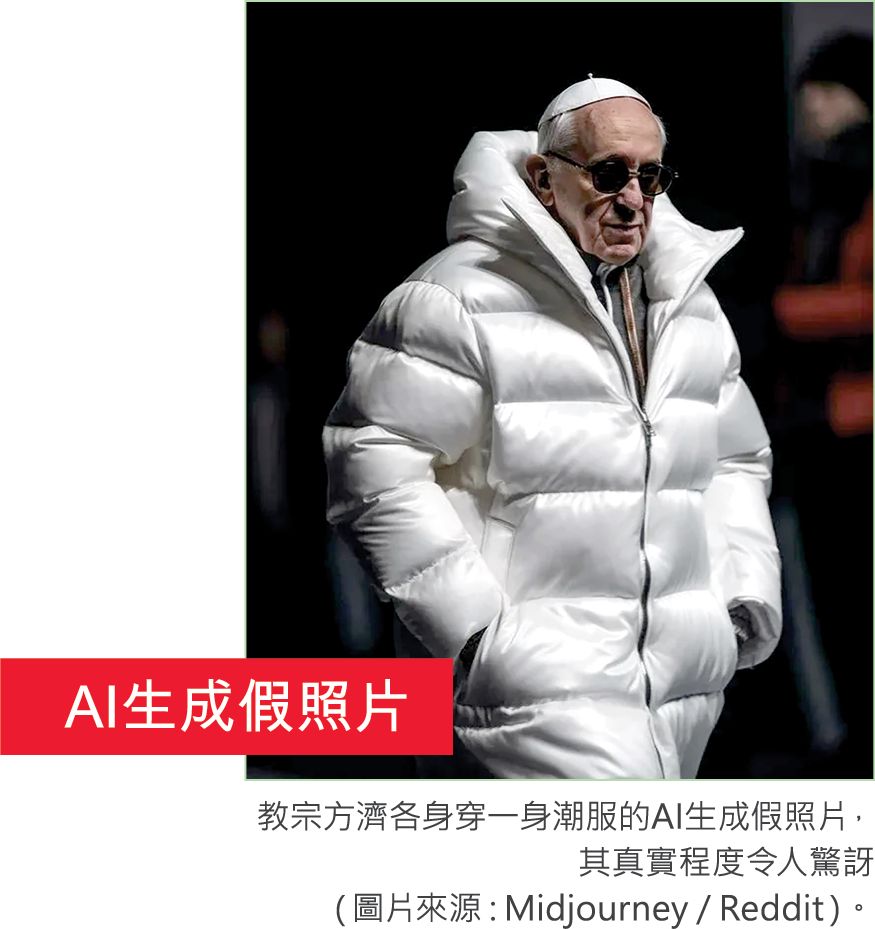Abstract
Changing political and economic systems around the world in the contemporary era are not only reshaping countries at the macro-level, but are also deeply influencing the family in terms of how it is formed, what its composition and structure is, and the interaction between family members. In this paper, webriefly review the definition of family and how it has changed over the last 30 years. Then, wediscuss some of the factors that have contributed to these changes. Among the transition of social ethos, culture and ideology, media is one of the most influential components. Wepay special attention to the impact of media and its possible challenge to the wellbeing of the family, and offer some tentative advice on how to prepare for a millennium of new culture characteristic of the heavy use of new media.
Introduction
Changing political and economic systems around the world in the contemporary era are not only reshaping countries at the macro-level but are also deeply influencing the family in terms of how it is formed, what its composition and structure is, and the interaction between family members. Increasing life spans, rising divorce rates, decreasing fertility rates and the diversifying family structure are identified as global trends accompanying post-industrialization and urbanization. Beck (2002) posits “a trend towards individualization that also increasingly characterizes relations among members of the same family”,and he further echoes Rosenmaryr (1992) who states “the contours of a ‘post familial family’ are taking shape”.
Therefore, in this paper, we will briefly review the definition of “family” and how it has changed over the last 30 years. Then, we will discuss some of the factors that have contributed to these changes. Of the changes in social ethos, culture and ideology, media is one of the most influential components. We will pay special attention to the impact of media and its possible challenge to the well being of the family, and shall follow this with some tentative advice on how to prepare for a millennium of new culture characterised by heavy use of new media.
The definition of family and how it has changed over the last 30 years
Different societies in different eras prescribe who should live together, what tasks should be performed, and how people should interact. Also, people’s perceptions of the family tends to be formed from their immediate situation and experiences (Weigel, 2008). Therefore, at one extreme, the family can be strictly viewed as being restricted to biological and marital kinship, and at the other, can apply to a group of people who collaborate, or study, or live closely together such as in a fraternity/sorority, orphanage and so on. As various as the definitions of family are, there are, nonetheless, some similarities among them. Bysurveying 250 representative societies, Murdock (1949) puts forward a definition of family which has been widely accepted in both anthropology and sociology for decades (Peters, 1999):
Family is a social group characterized by common residence, economic cooperation, and reproduction. It includes adults of both sexes, at least two of whom maintain a socially approved sexual relationship, and one or more children, own or adopted, of the sexually cohabiting adults.
Murdock further categorizes families into three types:
1. Nuclear family, which consistsof a married couple with their biological or adoptive children.
2. Extended family, which more commonly contains several generations living under the same roof.
3. Polygamous family, which means a man with two or more wives, or a woman who is wife to two or more men in one household. Moreover, it is the nuclear family that is considered as universal form of modern family.
Other definitions of family may emphasize different dimensions of family according to the theoretical assumption they belong to. For example, the functionalist posits that the concept of family is defined by its main function, to stabilize the adult personality and nurture children; while the economist will consider family as a production and consumption unit (Levin, 1999). However, generally speaking, some common themes can be identified from these definitions, namely, economic cooperation, a heterosexual union of an adult male and female with recognized rights and obligations, children, and a common residence (Peter, 1999).
How to define family is by no means a personal affair; rather, the concept of family is socially and contextually constructed, and, as Weigel (2008) points out, it always has social, political, economic, and legal implications. For example, political definitions of family indicate what kind of family planning is welcome and will be supported bythegovernment; economic and legal implicationsalso result from how family is conceptualised, in thatenjoying the benefit of health insurance, qualifying for government support, and sanctioning same-sex marriages and so on, all depend on how family is defined. Moreover, a changein the definition of family can, in turn, reflect a transformation of social and political ethos.
Since family studies have been brought to a new breadth and depth, the pluralism and diversity of family in terms of its form and structure around the world have been revealed. The universality of the nuclear family has been challenged, and the conventional definition of family has proven to be too simplistic and inadequate; also, the long existing dichotomy between the normative family and “alternative” lifestyle has been disclosed and criticized (Scanzoni & Marsiglo, 1993; Settles, 1999). Bernardes (1999) examines an array of studies on family from the 1970s through the 1990s and argues that the proportion of apparently prevailing nuclear families has fallen from 20% to 5% in the United Kingdom and from 13% to 7% in the United States. He also notes that a great number of households, such as cohabitating couples, unrelated adults and children etc., are excluded from censuses according to the official definitions of family. Against the background of the recent emphasis on human rights and equality, the role of law in family and feminism, Peters (1999) points out that with the general acceptance of separation and divorce in Western societies since the mid-fifties, the definition of family has expanded. Nowadays, the reconstituted household of divorced adults with a custodial child(ren) is widely accepted as family. He further urges a redefinition of family. Tillman and Nam (2008) also observe a worldwide trend of broadening the definition of family. In recognition of the many different living arrangements found in countries around the world, the United Nations (1998) has recommended that censuses consider the following guidelines when defining and measuring the family:
A family nucleus is one of the following types (each of which must consist of persons living in the same household): (a) a married couple without children, (b) a married couple with one or more unmarried children, (c) a father with one or more unmarried children, or (d) a mother with one or more unmarried children. Couples living in consensual unions should be regarded as married couples...The family nucleus does not include all family types, such as brothers or sisters living together without their offspring or parents, or an aunt living with a niece who has no child. It also excludes... a widowed parent living with her married son and his family.
Tillman and Nam (2008) go on to illustrate that although different countries may respond differently with regard to this recommendation, the trend towards a more inclusive definition of family can be identified around the world; for example, in Canada and throughout much of the European Union, cohabitation and homosexual marriage are becoming more normative and accepted practices.
To conclude, it is observable that families all over the world have been undergoing profound changes and transformations brought about by social, economic and technological developments (UNFPA, 2006). These changes include the following facets:
First, there has been an increasing industrialization and urbanization of the family, from being rural, farm-oriented to being urban, industrial and service-oriented. The latter, according to UNFPA (2006), composes 48%of the world’s population. The current western lifestyle of consumerism requires that the income of both parents is essential in almost all households. Rather than that of the traditional practice in which the husband is the only breadwinner in the family, nowadaysboth the husband and wife have to enter the labormarket.
Second, the perceptions and the situation with regard to gender have been changed, as has the authority structures of the family. Along with the development of education for girls and labor force participation of women, women’s status and power in the household have risen. Peters (1999) reviews many researchers’ studies and concludes that today, the husband no longer acts as the dominant member in many families; instead, the majority of western heterosexual relationships are junior-senior partners. Moreover, in some households, the husband and wife have equal say in decision making, and fathers are becoming more involved in child rearing.
Third, with the greater appeal of, and many expanding opportunities for higher education, careers, and economic independence, both men and women are delaying marriage until a later age, and many couples tend to postpone having children, some even choosing to be childless. Fertility levels have declined in almost all countries and regions of the world (Goode, 1982; Wei, 1983; Peters, 1999; UNFPA, 2006). In addition to this, increasing numbers of married couples are experiencing divorce and separation, which has led to many new or alternative forms of union, such as unmarried cohabitation, single parent families, reconstituted families and so on (UNFPA, 2006). Out-of-wedlock births have also risen since the late 1990s. For example, recently in the US.,37%of children in single-parent homes live with a divorced parent, and only slightly higher than 35.8% live with a never married parent (Day et. al, 1995).
The rise of the new culture and its challenge
A new culture is developing characterized by the prevalence of new communication technology. As Carrington (2004) states, we are now living in “post-industrial societies saturated with the multimodal texts of consumer culture-film, computer games, interactive toys, SMS, email, the internet, television, DVDs”, and this has profoundly shaped the everyday interaction amongyoung people, who are more attracted by, and more familiar with, these artifactsthan their family members.
Hughes and Hans (2001) examine the widespread use of computer and internet, and point out that although the level of access to computer and internet may vary among families with different incomes, education, household composition and ethnicity, it is reported that the use of communication technology in families is growing considerably all over the world. They go on to describe the profound influence that the new communication technology has on the lifestyles of families. First, for example, on-line shopping has become the fastest growing home internet activity (Hughes & Hans, 2001). Second, everyday interaction within the family has been altered by the use of the internet, although there is still disagreement on the nature of its impact. Some researchers claim that the use of the internet results in social isolation among people because it diminishes genuine social relationships, while other researchers argue that it frees people from the constraints of time and place to communicate with one another and can serve as another modality of interaction among family members (Lee & Chae, 2007). However, it is still evident that when children are using computers, they tend to have less social conversation with their parents (Hughes & Hans, 2001). Third, the internet may contribute to an alternative way of constructing the family. It can facilitate the build up of intimate relationships among people who are socially anxious or lonely. In addition to this, the internet can also play a positive role when family members are dealing with issues such as divorce, death, or having a child with special needs, for people may feel more comfortable talking about this through the internet than in face-to-face communication, and they can more easily reach social networks through the internet.
The impact of media on identity
Family identity
At the beginning of each episode of the very popular TV cartoon series The Simpsons, the most memorable part is the title sequence, where family members hurry home and sit together on the sofa to watch TV. This is a typical scene among thousands of families with TV sets. Although there are many other forms of media which have an impact on people’s lives, the TV inevitably has occupied a dominant place in the context of family life since its invention, only challenged by the birth of the internet. If TV confines people to the household, the internet surely does not. Endless information proliferates through the internet at an unimaginable speed. Compared with TV, the internet helps people obtain information any time, any place and with whatever content. Television and the internet have now become the agencies which mediate reality for people. Media messages, to a large extent, are not neutral, but often they become the agency for a person to become socialized, influencing people, albeit in a subtle manner, with respect to social values and ideologies.
Family is a place to help members define their identitiesin society, but now this responsibility is gradually being given to the media. Kellner (1995) defined identity as a function of predefined social roles and a traditional system of myths which provides orientation to define one’s place in the world, while seriously confining one’s thought and behavior. Individual and social identity are closely related; it is through the social identity of the family that individual family members think of themselves in a social context (Hoover, et. al. 2004).
Family identity is defined as the family’s subjective sense of its own continuity over time, its present situation, and its character (Bennett, et.al 1988). Media now play a critical role in constructing the family identity. Particular myths about the family can be created by the media; meanwhile the family images set a social value on the perceptions of family members in reality. The Simpsons is a TV cartoon series about an American family, with plenty of social issues presented in each episode. Watching the Simpsons’family and reflecting on their own families, the audience might ponder on what a normal family, American or their own, actually looks like.
The influence of TV on audience’s perceptions of the family is as important in the East as in the West. A recent South Korean TV series about family issues is very popular in mainland China. One reason is that family values are well represented, and this is what Chinese families like. In this South Korean TV series, with the focus on an extended family, a kind of nostalgic feeling of a traditional family pattern among Chinese audiences is aroused. Senior family members tend to appreciate the values embodied in the South Korean TV series, whereas young parents may relate more to the Chinese TV series which focuses on family crisis.
In Hong Kong, the TV portrayal of the family is complicated. Family issues such as twisted male-female relationships, divorce, betrayal of the family and other conflicts in families are widely presented. According to cultivation theory,long-term immersion in family crisis series could adversely influence people’s perception of reality. It can form family members’ views on the subject and shape the way they see their family life. This can severely threaten people’s family identity.
Self-identity
Kellner (1995) defined identity as a function of predefined social roles and a traditional system of myths which provides orientation to define one’s place in the world, while seriously confining one’s thought and behavior. It refers to who I am; where I belong; and how I behave, etc. Adolescence is a major life stage for identity formation, and the social contexts in which young people live help them to build their status. Many of them are informed of their identity through the media, and they have to constantly search for their identity through both real life and the media world. As noted by Milson (1972):
Identity is conceptualized as an internalized, self-selected regulatory system that represents an organized and integrated psychicstructure that requires the developmental distinction between the inner self and outer social world.
Adolescence is a developmental stage in both psychological and physical terms. Media consumption helps young people to form their identity, which isveryconsistent with their peer groups. The peer groups negotiate media meaning and identify their status in the course of talking about media content and the popular culture that is such an important part of their lives. Nowadays, young people communicate with each other by using various online tools to deliver their voices, which in itself is an expression of their identity. They write in MySpace and blog, comment on forums and produce videos, etc. Media participation allows young people to experience different self-identities in a virtual world. In the different virtual online activities, young people may behave differently from their real world identities. They can take on diversified roles in online communities, which fulfil their own suppositional identities. At the same time, this media participation can influence their identities in different ways in real social contexts.
Change in home upbringing
The media can have positive effects on family upbringing. If parents take advantage of the media, they can become a positive supporting position in the family. For example, there are many educational programmes on TV which are useful for children’s learning. Educational programmes are solid choices for parents seeking educational support. When TV and computers enter the household, children can learn new things beyond that which can be learned from their parents and siblings. The internet can make the learning process more interesting by “providing children with the thrill of information seeking and retrieval” (Tobiason, 1997), and also with the further development of two-way interaction via the internet, children are more and more drawn to the Web. Families with children now have personal computers in their homes. TV and internet not only provide information and entertainment, but also have become an alternative substitute when parents are not available, serving as an electronic baby-sitter.
Initially, parents buy computers and subscribe to internet access to facilitate their children’s education, but subsequently, they slowly realize the cost and benefits of equipping their children with computer internet access (Subrahmanyam, et. al. 2001). Indeed, media are double-edged swords. Parents always worry about the negative effect of media on their children. As Postman (1994) mentioned, media, mainly TV in his book, lead to the erosion of childhood and its innocence. TV allows access to unrestricted information. Children can watch whatever they like and can be exposed to the secrets of the adult world. Actually, surfing the internet, we see Postman’s idea even amplified. The information on the internet is uncensored and more overflowing than on TV. Parents are usually concerned with six areas concerning their children’s online activities: 1) the distribution of pornography; 2) sexual predators; 3) misinformation and hidden messages; 4) loss of privacy; 5) unscrupulous vendors; and 6) the development of childhood behavior disorders, including social isolation and Internet Addiction Disorder (Hughes & Campbell, 1998).
Violence, sex and obscene messages in media make family rearing increasingly challenging. Social learning theory claims that learning is acquired through observing, imitation and modeling(Bandura, 1977), and that media violence influences children’s aggressive behavior. Bandura’s study focuses to a large extent on TV violence, but nowadays online gaming is popular among children, adolescents and even some parents. Therefore, the question of how parents can control the impact of media violence on their children is a difficult one. In the family, parents often hope to inculcate their children with the proper attitudes and behavior. They feel it is their duty to set an example for their children and try their best to create a comfortable atmosphere at home. However, parents’ words cannot compete with the attractive content from the powerful media. In many families, adults are not good at playing and using these media activities, which decreases their important and reliable influence on children to a certain degree (Casas,et.al. 2003). Such a media and technology saturated environment inevitably changes family upbringing.
Interaction in the family
The advent of TV brought family members together, whether they had to get together to negotiate which programme to watch, or whether they talked about TV programmes together. Lull (1980) points out that television has become both a resource for conversations in family social interactions and a means by which families structure their time together. In fact, viewing television is a social process. It often takesplace among family members and friends, and with family members discussing what they have seen and coming to collective understandings (Katz & Liebes, 1985). Thus, these interactionprocessesteach and reinforce conventional ways of comprehending both the medium and social reality among family members in general(Alexander, 1996). The TV offers a chance for interaction among family members, whereas the internet does not necessarily require family members to get together physically. There are continual and controversial discussions about the impact of the internet on family interaction. From a positive side, an early study claimed that interactive games with new game sets brought together members for shared play and interaction (Mitchell, 1985). In recent situations, members can chat online with their parents if they are separated from each other. They can also email each other to keep in contact. Media become a bridge and a connecting knot for the interaction.
What can we do?
Regulation of media
It is oftenthatthe government tries to set down some regulations to control media content and it also tries to invent different technologies to help sift out or block the unfit content. In the US, the family can use V-chip to know better the rating system and choose the programmes which are suitable for their children. Technology can help regulate media to a certain degree, but not enough. From the perspective of protecting family members, especially the children in the family, the need of laws on protecting children are also urgent from the national angle, such as in the US, where there are the Child Online Protection Act (COPA) and the Children's Online Privacy Protection Act (COPPA). The COPA was passed in 1998 with the purpose of restricting access by minors to any material defined as harmful on the internet, while the COPPA specifically protects the privacy of children under the age of 13 by requesting parental consent for the collection or use of any personal information of the users.
The intervention for a healthy media diet
The socialization process has changed so dramatically that television has become a primary agent, often replacing parents (Bronfenbrenner & Condry, 1970). Parents, as the first educators in children’s lives, encounter a tough task in an overwhelming media message world. The internet is accepted as a very easy means of access to materials for children and adolescents, over which their parents have little control and minimal supervision. Parents often thinkthatthey know their children’s online life well, but this is not true, especiallyon the duration they spend together online (Larsson, 2003). Active intervention in children’s media consumption is an alternative way for most parents. The American Academy of Pediatrics recommends that parents make media a family activity with their children and discuss what they see, hear and read. As in the family context, the interventions (Lowery & DeFleur, 1995) that parents can do in viewing TV are:
1. Limited viewing: parents can limit the time for their children to view TV.
2. Content control: parents can limit or encourage some programmes.
3. Purposeful viewing: parents can arrange those programmes good for their children’s social behaviour.
4. Direct mediation: parents can criticize their children directly for viewing some programmes.
5. Indirect mediation: parents can talk with their children about a programme and analyze the content when they view the programme.
6. Springboard techniques: parents can show their children how to take advantage of media messages in everyday life.
Communication is most important amongfamily members. Co-viewing TV or surfing on the internet together will be a very delightful experience among family members. Many families have rules regarding internet use, the most common rule being not to give out any personal information on the internet. Parents’ positive intervention is very important for the well-being of their children in developing acceptable attitudes and behavior when they use media. Parents also should observe or communicate with their children about what kind of activity and friends they make online (Law, et.al.2001).
Media literacy programmes for both children and parents
Media literacy is the ability to access, analyze, evaluate and communicate through media in a variety of forms (Aufderheide, 1992). Because of the media environment surrounding young people, the aim of media literacy is to help young people critically take the media messages and communicate through media effectively. Parents cannot be viewed as the only ones responsible for their children’s media use and activities. Parents need support to better interact with their children in relation to media and new technology use. This does not mean that parents should learn quickly and deeply about media andbecome “experts”, but they need to know how to maintain permanent communication channels with their children. Parents need to talk more openly and bi-directionally with their children, accepting that theycan teach the adult about media, and frankly inform the adults about why it is so exciting (Casas, et al., 2003).
Many media literacy programme also help parents to be wise about media and about their children, such as the National Institute on Media and the Family, which established a Mediawise network to help buildinghealthy families through the wise use of media (National Institute on Media and the Family, 2009).[1] In this programme, parents can view the free guide and children can learn how to use the media healthily. Another NGO,Just Think group,created the Family Media Forum to promote greater dialogue between children and parents about media and media issues. The intention is to help participation to enhance and deepen communication skills (Just Think, 2009).[2] In such a world, the present generation of children has the incredible opportunity to hone a set of social and technological skills that will give them an edge in school and the job market. What we can do is to maximize the benefits and minimize the harm.[3]
Conclusion
The obvious impact of media on family is that it causes changes in the family, whether with respect to its identity or to family communication. Family is so important in personal development and carries the main responsibility for raising children. Besides family, children still live in the bigger context of society; they go to school and take part in diversified activities. School and other organizations can also cooperate with the family to help parents and their children in a media-saturated world. Organizations relating to youth development and those communities relating to family issues can provide training for the family to realize the impact of media and how to become familiar with different kinds of media. In addition, schools should also provide support for children to develop responsible, productive and pleasurable uses of the media. As Postman (1992) argued in his book, we must take charge of the technology that is running our lives and place it within the larger context of human goals and social values.
References
Alexander, A. (1996). The Effect of Media on Family Interaction. In M. J. Carter (Ed.), Society and the Media : A Collection of Essays. New York: HarperCollins College Publishers.
Aufderheide, P. (1992). Media Literacy: A report of the national leadership conference on media literacy. Paper presented at the National Leadership Conference on Media Literacy.
Bandura, A. (1977). Social learning theory. Englewood Cliffs: Prentice Hall.
Beck, U. & Beck-Gernsheim, E. (Eds.). (2002). Individualization: institutionalized individualism and its social and political consequences. London: SAGE.
Bennett, L. A., Wolin, S. J., & Mcavity, K. J. (1988). Family Identity, Ritual and Myth: A Cultural Perspective on Life Cycle Transitions. In C. J. Falicov (Ed.), Family Transitions : Continuity and Change over the Life Cycle. New York: Guilford Press.
Bernardes, J. (1999). We must not define “the family”! Marriage & Family Review, 28(3/4), 21-41.
Bronfenbrenner, U., & Condry, J. C. (1970). Two worlds of childhood: U.S. and U.S.S.R. New York: Russell Sage Foundation.
Carrington, V. (2004). Texts and Literacies of the Shi Jinrui. British Journal of Sociology of Education, 25(2), 215-228.
Casas, F., Gonzalez, M., & Figuer, C. (2003). Parents, Children and Media: Some Data from Spain, Brazil, Norway, South Africa and India. In C. v. Feilitzen & U. Carlsson (Eds.), Promote or Protect? : Perspectives on Media Literacy and Media Regulations. Nordicom, Sweden: UNESCO International Clearinghouse on Children, Youth and Media, Göteborg University.
Day, R. D., Gilbert, K. R., Settles, B. H., & Hurr, W. R. (Eds.) (1995). Research and theory in family science. Pacific Grove, CA: Brooks/Cole.
Goode, W. J. (1982). The family (2nd edition). Englewood Cliffs, N.J.: Prentice-Hall.
Hoover, S. M., Clark, L. S., Alters, D. F., Champ, J. G., & Hood, L. (2004). Media, Home, and Family. New York and London: Routledge.
Hughes, D. R., & Campbell, P. T. (1998). Kids Online: Protecting Your Children in Cyberspace. Grand Rapids, MI: Fleming H. Revell.
Hughes Jr, R., & Hans, J. D. (2001). Computers, the Internet, and Families: A Review of the Role New Technology Plays in Family Life. Journal of Family Issues, 22(6), 778-792.
Katz, E., & Liebes, T. (1985). Mutual Aid in the Decoding of Dallas: Preliminary Notes from a Cross-Cultural Study. In P. Drummond & R. Patterson (Eds.),Television in Transition. London: British Film Institute.
Kellner, D. (1995). Media Culture: Cultural Studies, Identity, and Politics Between the Modern and the Postmodern. London, New York: Routledge.
Larsson, K. (2003). Children's On-line Life -- and What Parents Believe: A Survey in Five Countries In C. v. Feilitzen & U. Carlsson (Eds.), Promote or Protect? : Perspectives on Media Literacy and Media Regulations. Nordicom, Sweden: UNESCO International Clearinghouse on Children, Youth and Media, Göteborg University.
Law, N. W. Y., Chau, A. W. L., & Yuen, A. H. K. (2001). Study on the Influence of Information Technology on Youth. Hong Kong: The University of Hong Kong.
Lee, S-J & Chae, Y-G (2007). Children's Internet Use in a Family Context: Influence on Family Relationships and Parental Mediation. CyberPsychology & Behavior, 10(5), 640-644.
Levin, I. (1999). What phenomenon is family? Marriage & Family Review, 28(3/4), 93-104.
Lowery, S. A., & DeFleur, M. (1995). Milestones in Mass Communication Research : Media Effects. New York: Longman Publishers.
Lull, J. (1980). The Social Uses of Television Human Communication Research, 6(3), 197-209.
Milson, F. (1972). Youth in A Changing Society. London, Boston: Routledge & Kegan Paul.
Mitchell, E. (1985). The Dynamics of Family Interaction around Home Video Games. Special Issue: Personal Computers and the Family. Marriage and Family Review 8(1-2), 121-135.
Murdock, G. P. (1949). Social structure. New York: Macmillan.
Peters, J. F. (1999). Redefining Western families. Marriage & Family Review, 28(3/4), 55.
Postman, N. (1992). Technology: The Surrender of Culture to Technology. New York: Vintage Books.
--- (1994). The Disappearance of Childhood. New York: Vintage Books.
Rosenmayr, L. (1992). Showdown Zwischen Alt and Jun? Wiener Zweitung, 26 June:1.
Rothschild, N. (1987). Cohesion and Control: Adolescents' Relationshis with Parents as Mediators of Television. Journal of Early Adolescence, 7(3), 299-314.
Scanzoni, J. & Marsiglo, W. (1993). New action theory and contemporary families. Journal of family issues, 14 (1), 105-132.
Settles, B. H. (1999). Definitions of the family: Professional and personal issues. Marriage & Family Review, 28(3/4), 209.
Subrahmanyam, K., Kraut, R., Greenfield, P., & Gross, E. (2001). New Forms of Electronic Media: The Impact of Interactive Games and the Internet on Cognition, Socialization, and Behavior. In D. G. Singer & J. L. Singer (Eds.), Handbook of Children and the Media. Thousand Oaks, London: Sage Publications.
Tillman, K. H., & Nam, C. B. (2008). Family Structure Outcomes of Alternative Family Definitions. Population Research & Policy Review, 27(3), 367-384.
Tobiason, K. (1997). Taking by Giving: Kidsconnect and Your Media Centre. Technology Connection, 4(6), 10-11.
UNFPA (2006). Changing families: Challenges and opportunities. Retrieved on 03/03/2009 fromhttp://www.un.org/esa/socdev/family/IDF.html.
United Nations (1998) Principles and Recommendations for Population and Housing Censuses (Revision 1). Retrieved on 03/03/2009 from http://unstats.un.org/unsd/pubs/gesgrid.asp?id=127.
Wei, Z-L. (1983). Chinese Family Problems: Research and Trends. Journal of Marriage and the Family, 45(4), 943-948.
Weigel, D. J. (2008). The Concept of Family: An Analysis of Laypeople's Views of Family. Journal of Family Issues, 29(11), 1426-1447.




























